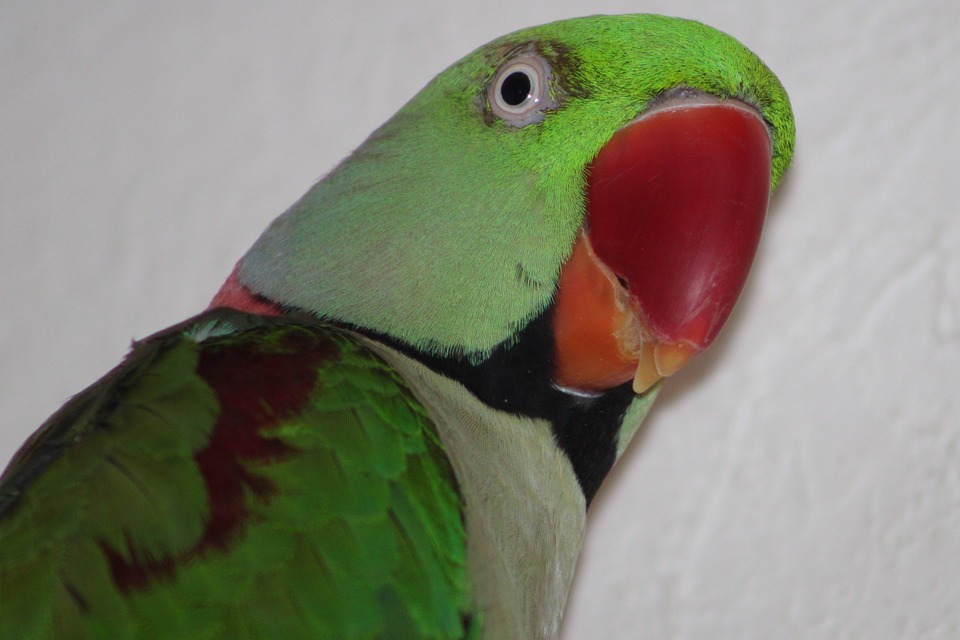Parrots are known for their intelligence and ability to learn tricks, but sometimes it can be challenging to come up with new and unique ideas. That’s where a parrot training creativity corner comes in. By creating a dedicated space for training and providing the right tools and environment, you can unlock your parrot’s potential for intelligence and creativity.
The first step in setting up a parrot training creativity corner is choosing the ideal location. Find a quiet and secure area in your home where you and your parrot can focus without distractions. This could be a spare room, a corner of your living room, or even a covered outdoor space. The key is to create an environment where you and your parrot can both feel comfortable and relaxed.
Next, it’s important to create a comfortable environment within the creativity corner. This means providing perches, toys, and a comfortable training stand or perch. Your parrot should feel safe and at ease in this space, as it will allow them to focus and engage in the training process.
Organizing training props is another essential aspect of the creativity corner. Arrange a variety of training props, such as clickers, target sticks, treats, and interactive toys. These props will provide your parrot with different tools to engage their senses and encourage learning. By offering a variety of options, you can keep your parrot interested and motivated during training sessions.
Visual aids can also play a significant role in your parrot’s training. Hang colorful posters or charts illustrating various tricks and commands. Parrots are highly visual creatures and will be captivated by visual cues that prompt them to perform specific actions. These visual aids can help reinforce their learning and make the training process more engaging.
Introducing novelty is crucial to keeping your parrot’s interest piqued. Rotate toys, props, and challenges regularly to prevent boredom. Fresh and engaging elements will stimulate your parrot’s creativity and encourage them to learn new tricks. Remember, parrots are curious creatures, and they enjoy exploring new things.
When it comes to training tips for your parrot’s creativity corner, it’s essential to start with basic training. Begin with simple tricks and commands to build a foundation of trust and understanding between you and your parrot. Gradually progress to more complex tricks as they become more comfortable and confident in their abilities.
Positive reinforcement is key to successful parrot training. Use techniques such as clicker training and rewards to motivate and encourage your parrot. Positive reinforcement will reinforce their desired behavior and make the training process enjoyable for both of you.
Patience and consistency are vital in parrot training. Set aside dedicated training sessions each day and be patient with your parrot’s progress. Remember, each parrot learns at their own pace, and it’s important to respect their individual abilities and limitations.
If your parrot is struggling to grasp a particular trick, break it down into smaller, more manageable steps. This approach allows your parrot to understand and master each component before moving on to the next. Breaking tasks into smaller steps will help your parrot build confidence and ensure they have a solid foundation for more complex tricks.
It’s also important to keep training sessions short and fun. Parrots have short attention spans, so it’s best to keep sessions brief and engaging. End each session on a positive note, and always leave your parrot wanting more. This will keep them excited and motivated for future training sessions.
Here are some frequently asked questions about parrot training:
Q1: How long should each training session be?
A: Parrot training sessions should typically last between 5 to 10 minutes. Short and focused sessions are more effective, as parrots can become easily distracted.
Q2: Can any parrot learn tricks?
A: Yes, most parrot species have the ability to learn and perform tricks. However, some species may have a higher aptitude for learning than others. It’s important to understand your parrot’s individual abilities and limitations.
Q3: How can I prevent my parrot from becoming bored with training?
A: To prevent boredom, introduce new tricks, props, and challenges regularly. Keep training sessions fun and engaging by incorporating games, puzzles, and interactive toys.
Q4: What if my parrot doesn’t respond to training?
A: Each parrot is unique, and some may take longer to respond to training than others. Evaluate your training techniques and consider seeking guidance from an experienced avian behaviorist or trainer.
Q5: Can I train my parrot using only verbal cues?
A: Verbal cues can be effective, but combining them with visual cues, such as hand gestures or target sticks, enhances the learning process. Parrots are highly visual creatures and respond well to visual prompts.
By implementing a parrot training creativity corner and using effective training techniques, you can unlock your parrot’s intelligence and creativity. This will foster a fulfilling and engaging bond with your feathered companion. Remember to be patient, consistent, and always prioritize your parrot’s well-being throughout the training process. Happy training, and enjoy the wonders of your parrot’s unique trick repertoire!









